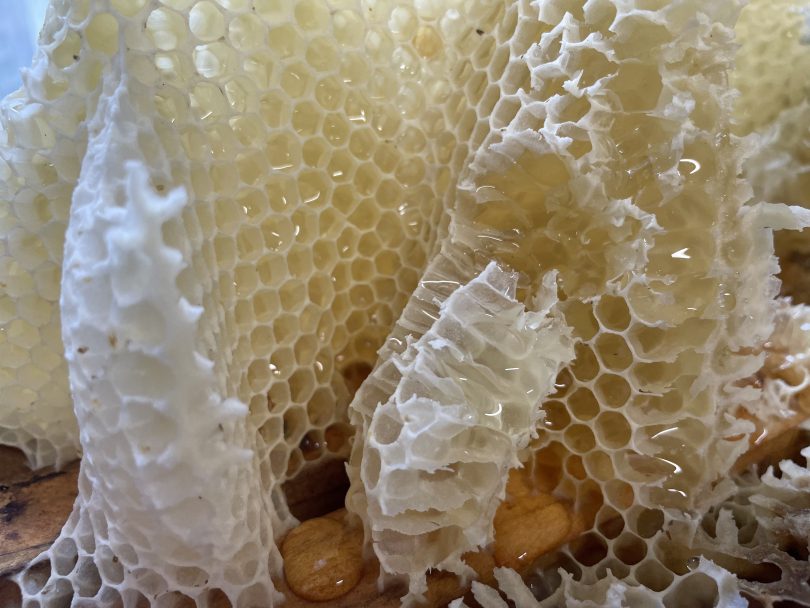
Honeycomb dripping with delicious Iron Bark honey. Photo: Tom McGann.
Beekeepers have faced a tough few years with droughts and fires affecting them in substantial ways, however there is light at the end of the tunnel with honey production flowing again.
The South Coast has seen a resurgence of trees since the drought and fires, from Iron Bark to White Clover flowering for the busy bees and beekeepers to produce delicious honey.
Batemans Bay beekeeper Geoff Rutherford has seen first-hand how honey production is making a comeback.
Lots of rain has allowed trees in the shire to flower again and while this is good, he says too much can be a problem.
“It’s one or the other,” he said. “It’s either too much rain or no rain at all.”
Despite this, Mr Rutherford says beekeepers in the area are seeing higher levels of honey production with New South Wales having the highest production level in Australia.
“NSW is the bulk of Australia’s honey crop,” he said.
“One of the most popular flowers for bees is Paterson’s curse and it’s flowering again.”
During the drought in NSW, Paterson’s curse was destroyed by bugs inland due to the lack of water, however the flower is re-growing, resulting in more honey.
Trees are also continuing to bloom with areas that didn’t burn and ones that did, recovering and flowering again.
While this news is positive, Mr Rutherford stressed that it was all season-based and while it is good now, it is hard to tell what level trees will be flowering at in the future.
For now, professional beekeepers on the South Coast are producing honey at high levels again.
But it isn’t just beekeepers who are relishing this sweet boost of honey production as hobby hive popularity is growing exponentially.
Liam Snowden, a young school student in NSW, has eight hobby hives and has been hobby beekeeping for six years.
He has seen a sudden growth in popularity when it comes to hobby beekeeping in recent years, with many of his peers informing him their parents are getting their own hive.
“A lot more people are getting into it now,” he said. “They like to ask me for advice.”

Liam Snowden tending to one of his eight hobby hives. Photo: Belinda Snowden.
And advice is something Liam is happy to give, having acquired his first hive when he was 12. But it didn’t come easy.
Having a good first year in 2016, Liam, just like Geoff Rutherford, experienced and struggled with the drought.
“I had a good year in 2016 but after that, the following four years we had next to no rain,” he said. “The bees really suffered.”
But things are starting to come back with lots of rainfall in the past two years and trees flowering, Liam’s bees are striving again – as are bees around the state.
If people are interested in getting their own hive, now is the time to do it. However, Liam stresses it isn’t as easy as setting the hive up and letting the bees do their own thing, it does involve some maintenance.
“If you are going to get a hobby hive, you need to know how to manage the hive,” Liam said.
“Don’t be afraid to ask questions – you will make mistakes. Make sure you’re managing the hive well because if it gets a disease, it can spread to other hives.”






